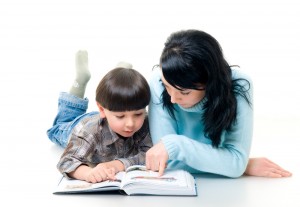By Christy Olson
(for part 1 of this article, click here)
Bibles for young readers
Around second grade, most children become solid readers. They begin to discover reading by themselves and the joy of chapter books. And what is the greatest chapter book in the world? You guessed! It’s the Bible. So how can we help these new and developing readers explore God’s word?
Children’s Bibles come in many versions. The most important thing to look for is ease in reading, study materials to enhance the stories, and the ‘excitement factor.’ This will eventually come in the stories themselves, but for a middle and upper elementary children it may also come in a cover that pulls them into the Bible or in ‘extras’ like book tabs, interesting facts, maps, and book marks. For older readers, a Bible paraphrase in modern language might be a better fit.
It helps to know the kind of Bible that is used in religious education programs at your church, but this may change during your child’s time in Sunday school. The reality is that children can adapt to the fact that in different versions the stories and emphasis might change.
Reading the Bible- Really!
So, you give your child a Bible, but will he or she sit down and read it? The chances go way up when adults spend time introducing children to the Bible. Show them where things are found. If your child is a visual learner, point out charts, maps and illustrations. If your child is attracted to words, be sure the bible has a good glossary where he or she can look up new words. Tactile learners might need the added interest of stickers, book tabs, or interesting paper to help draw them into the stories of the Bible. Mathematical and logical learners will have a natural attracting to the system of numbering chapters and verses so be sure they understand how to read a Bible reference before you turn them loose.
Try taking your Bible off the shelf and place it in the middle of the dinner table, on top of the television, on the piano bench, or next to a favorite chair in the living room. Try giving your child a flashlight and giving them permission to read the Bible under their covers before bedtime.
Make time for the important spiritual discipline of reading your own Bible and let your child ‘catch’ you doing so. Share your excitement about what you are reading and listen when your child has new information to tell.
Whichever Bible you choose to give your child, the most important lesson you can teach them is that you value reading the Bible. Put the Bible in their hands but also put it in their lives.
–Christy Olson has a B.A. in elementary education and elementary music and an M.A. in Theology. She has worked in ministry with children , youth, and families for 30 years, the last 20 as an Associate in Ministry for the ALC/ELCA.

No responses yet